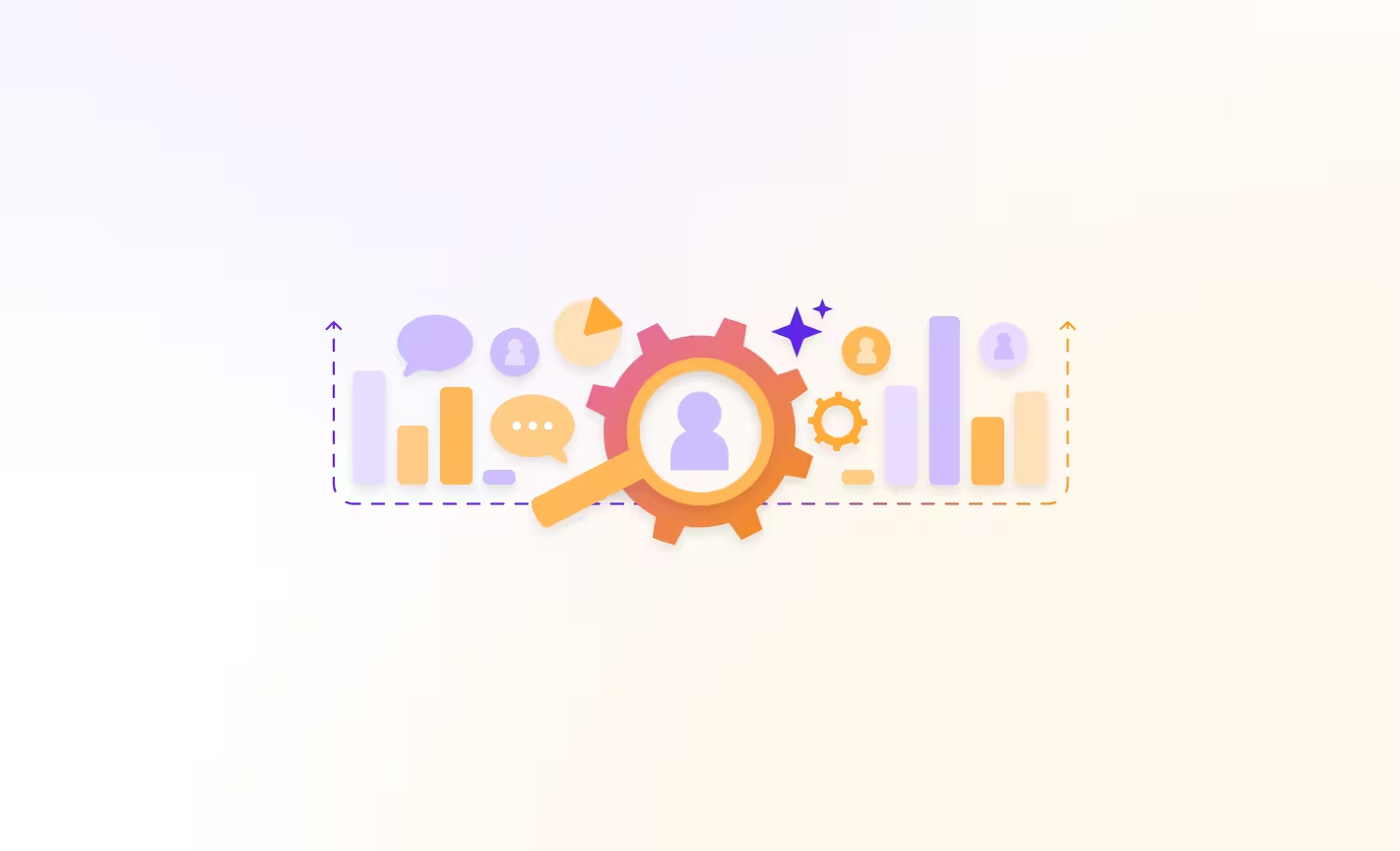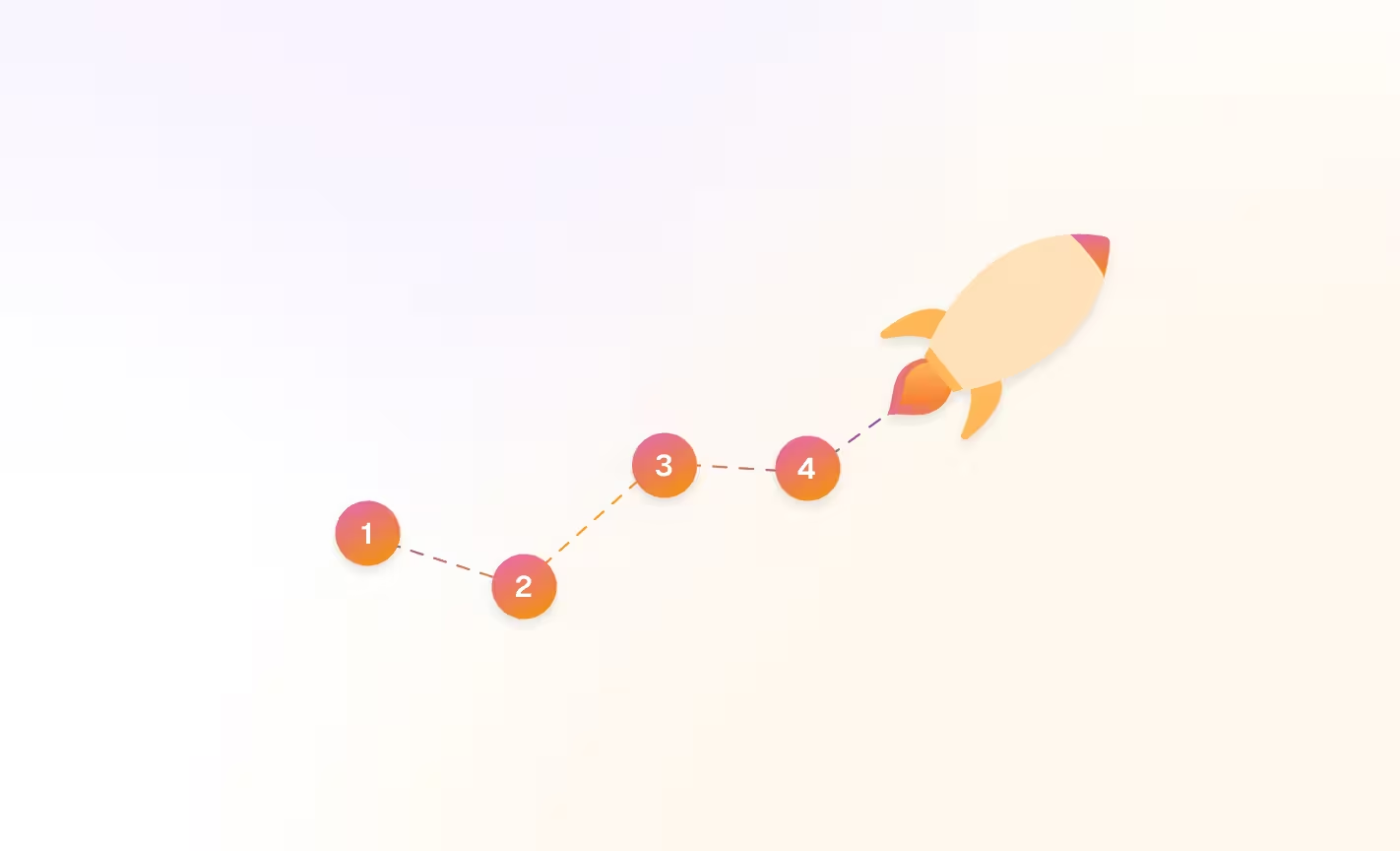While reports indicate that recruiter productivity levels are declining, this paints an unfair picture of your recruiters.
It’s not that they aren’t working hard enough — it’s just that it’s harder to get results.
The metrics you normally use to measure productivity (like time-to-hire, number of hires per recruiter and interviews per role) may be below target, but this is largely driven by recruitment industry trends and the job market, not recruiter performance.
But regardless, you can’t just sit back and accept low productivity as a factor of life right now when it directly affects your bottom line.
You need to know exactly what’s slowing your recruiters down, so you can target these productivity blockers and reverse the decline.
In this article, we’ll focus on how new technologies like generative AI can enhance your team’s productivity so you can get back on track with making placements and generating revenue for your recruitment agency.
But first, let’s take a look at what’s getting in the way of your recruiters making new hires.
What’s affecting recruiters’ productivity?
This reported downturn in recruiter productivity comes down to three core points: more candidates, less recruiters to manage them, and more pressure from clients to find them the best quality candidates on the market.
Online application processes and one-click applies on job boards have made it easier than ever for candidates to apply for roles. As a result, application numbers per position have soared.
And of course, this is a good thing. But it also comes with a downside: it significantly increases workload for your hiring team, and makes it harder to find high-quality candidates.
The offshot of this is that clients are placing even more emphasis than usual on the quality of candidates you send them. Recruiters have to be even more thorough in their selection process, and conduct even more interviews for every position, to find top talent — which demands more time and effort.
And lastly, economic pressures have led many agencies to streamline their recruiting teams, despite the increased workload. This leaves fewer recruiters to manage ever-growing to-do lists, making them less efficient and often leading to burnout.
But enough about the problem — what about the solution?
That’s where AI comes into play.
How AI can boost recruiter productivity
AI-powered recruitment technology offers a powerful solution to these productivity challenges, and it’s already being leveraged by hiring teams worldwide.
There are three main ways AI can be used to massively increase recruiter productivity:
- Take over time-consuming admin tasks
- Provide real-time knowledge about your candidates and roles
- Analyze data to provide instant insights
And here’s how the technology facilitates this:
- Infinite execution power: AI can process large volumes of data much faster than a human can. This means recruiters can rely on AI to handle repetitive tasks, such as sorting through resumes or scheduling interviews.
- Contextual understanding: AI can understand context, making it highly effective at screening candidates. By analyzing a candidate’s resume, cover letter, and other application materials, it can quickly assess their suitability for a role.
- Unstructured data handling: AI can work with unstructured data like video interviews, portfolios and social media profiles to get a comprehensive view of a candidate without a recruiter manually reviewing all the information.
- Automation: AI can automate routine tasks, like sending follow-up emails or reminders for upcoming interviews, to reduce admin burden.
- Multitasking: AI can multitask without losing efficiency, making it possible to manage multiple recruitment processes simultaneously. This ability helps recruiters stay on top of their workload, even when handling several roles at once.
7 recruitment tasks AI can support with
Here are 7 recruitment tasks AI can support your hiring team with to streamline the recruitment workflow and increase your team’s productivity levels.
1. Interview prep
A good candidate interview relies heavily on thorough preparation. But to manage the prep stage well, this requires a lot of recruiter time and energy, and this impacts productivity metrics as a result.
There are a few different ways AI can help recruiters prep for interviews and massively reduce the amount of time they spend getting ready for them.
AI’s infinite execution power means it can scan through vast amounts of candidate information and documentation and pull out the details that matter, presenting each candidate in an easy-to-digest format prior to interview.
If your client’s interview process demands considering a lot of candidates for a single role, you can imagine just how much time this will save your recruiters. It will literally shave hours of work off their day.
By creating summaries of each candidate using data it can gather (like their resume, job application and responses to pre-screening questions) this will give recruiters the info they need to get to know a candidate well in just a few minutes before they start the interview.
Thanks to AI’s ability to understand context, it can even make suggestions for specific areas to explore during the interview, or come up with interview questions based on the candidate’s background as well as the job description.
2. Note-taking during meetings
Taking notes during a candidate interview or intake meeting is a real burden that gets in the way of recruiters being able to engage. If their heads are constantly in the note-taking, how can they actively listen and create a good client or candidate experience?
Bringing an AI assistant into meetings and candidate interviews can have a big impact on recruiter productivity and engagement during these conversations.
The technology can record and take notes in real-time, capturing key details and making comments along the way. This allows recruiters to focus on the conversation rather than the paperwork, which improves the interview experience for everyone involved.
Once the interview is over, the AI will organize and categorize the notes, making it easier to review candidates against the job description and share insights with the hiring team later.
%2520(1)%2520(1).avif)
3. Interview and intake debriefs
After a candidate interview or an intake call with a hiring manager, it’s easy to instantly forget the details — even if the meeting has literally just taken place. This is why debriefs are so important for keeping meetings productive.
Thanks to AI’s ability to work with unstructured data, the technology can analyze recorded interviews, flag key points and even generate follow-up questions for your next conversation.
This saves recruiters time in reviewing interviews and helps ensure no critical details from candidates or hiring managers fall through the cracks.
AI can even provide sentiment analysis to gauge the candidate's attitude and communication style during the interview, so it’s not just about assessing the interview transcription, but the interview itself.
4. Candidate profile creation
A candidate profile clearly summarizes the candidate’s qualifications, interview performance, soft skills and overall fit for the role.
Recruiters can easily spend a whole afternoon just pulling profiles together, as they need to consult a whole load of different sources — their interview notes, the candidate’s CV and LinkedIn profile, and more. There are a lot of sources to consider, so it’s a task that can really slow the hiring process down.
But using AI technology, recruiters can generate detailed candidate profiles in a matter of seconds. AI does this using the information it gathers during the interview, debrief, and any corresponding documentation, including unstructured data like email correspondence.
This write-up can be customized based on the specific criteria the recruiter or hiring manager wants to emphasize. You just need to tell the AI workmate what you need and it will display the relevant information in a clear and easy-view format.
.avif)
5. Job description generation
AI can also assist in crafting precise and engaging role descriptions for your job postings — a task that can easily eat up a lot of time as recruiters get bogged down on the details. It does this using input from recruiters and hiring managers, and also details it pulls from intake meeting debriefs.
But the technology doesn’t just stop there. The AI can also scan any existing job data available in your recruitment software to analyse similar roles.
That way, it can also suggest any key responsibilities, qualifications, and desirable skills that have perhaps been forgotten about during discussions about the open position, creating a more comprehensive job description.
AI can also go a step even further, ensuring the language your recruiters have used in the job description is inclusive and free of bias, which will broaden the pool of potential applicants while still ensuring you only appeal to the right job seekers.
6. Sending follow-up emails
Whether you’re reaching out to thank candidates for their time, inform them of next steps or request additional information, sending follow-up emails is a time-consuming stage of the process. But it’s a part of the process that cannot be skimped on, as candidate expectations are higher now than they’ve ever been.
But the good news is, an AI-powered email integration with your CRM means recruiters can automate the process of sending these follow-up emails, using personalized templates and scheduling them to go out at the most appropriate times.
And the even better news is that one study found that 84% candidates would prefer follow-ups be automated rather than lengthy back-and-forth communication as it’s more timely.
Automating candidate comms like this ensures candidate pools are always engaged as they move through different stages of the hiring process, without slowing down productivity.
7. Updating the ATS
Updating the ATS after interviews and calls with candidates is a task most recruiters will admit they forget to do. But it’s a task that can have a big negative impact if it’s not managed properly.
If your ATS isn’t up-to-date, your talent pools and talent pipelines won’t be accurate, meaning your recruiters will waste time performing tasks that may be redundant.
AI can automatically populate the ATS after intake calls and interviews. It can take unstructured data (like Linkedin profiles and information contained in emails) and turn it into structured data (filling out fields in the candidate record). This will make your ATS the golden source of info it’s built to be.

AI’s impact on recruiter productivity
You don’t have to look far to find data evidence of the impact AI is already having on recruiter productivity levels. For example, some report reducing their time-to-fill ratio by 90% and improving their hiring rate by 40% using AI-powered recruitment tools to evaluate candidates.
According to LinkedIn data, 45% of recruiters said they were using AI to automate tasks so they can spend their time on more fulfilling work and 42% said AI helped remove the mundane low-impact tasks that get in the way of productivity.
Over to you
Incorporating AI into your recruitment processes isn't just about keeping up with the latest technology—it's about fundamentally improving how you work.
By automating repetitive tasks, enhancing decision-making, and freeing up time for more strategic activities, AI can help you boost productivity and ultimately make more placements.
The tools are there and waiting to be leveraged by your recruitment team - book a demo today to see how Carv can empower your recruiters and improve how your agency recruits.
.avif)
%20(1).avif)

%20(1).avif)




